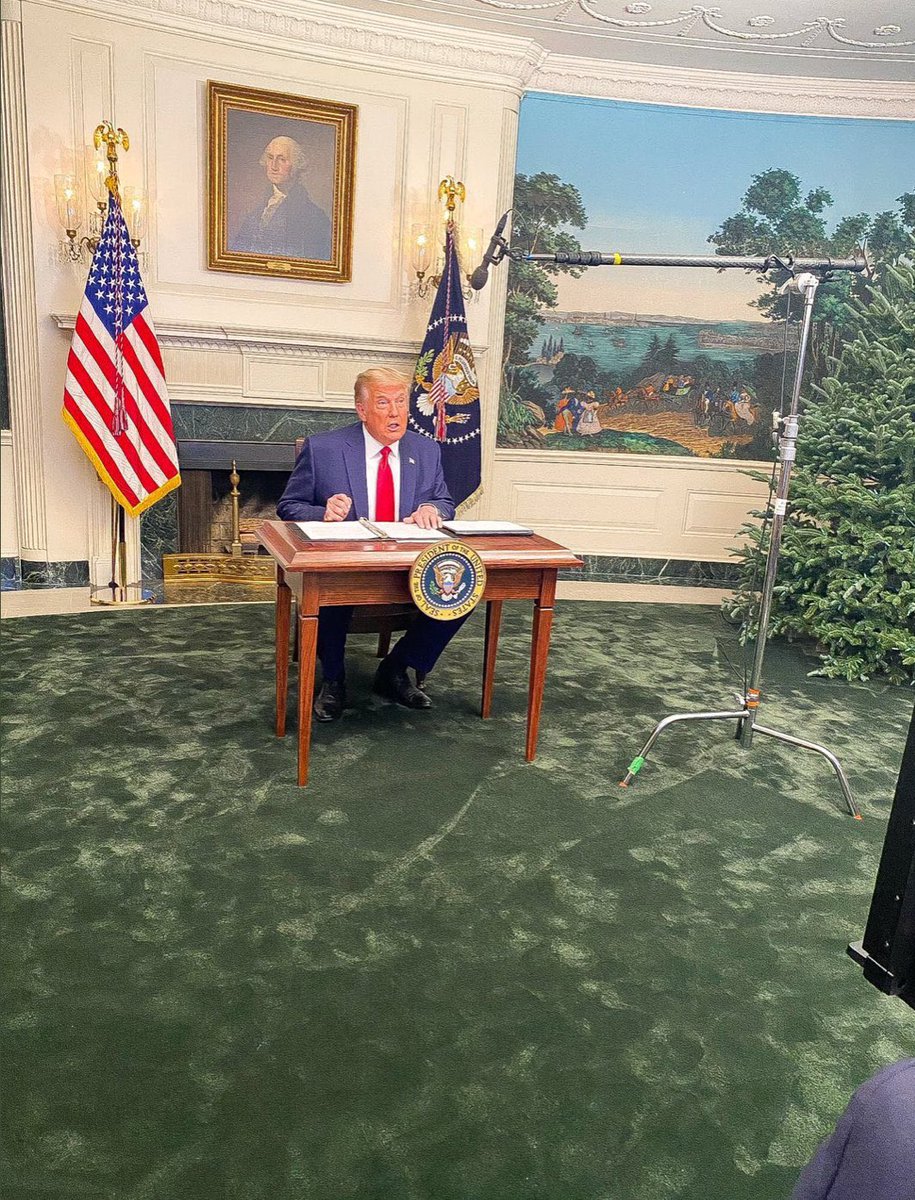
This picture has gotten a lot of attention because of the tiny desk and weird room decor. But geek-Americans like me are focused on something else: the microphone boom and stand, which are emblematic of this administration’s distain for expertise. Let me explain. 

The thing is a “C-stand” with a microphone boom pole attached to it with via a grip head and boom holder. These things are not designed to be used together, but points for improvising.
The first thing you might notice is the lack of a counterweight on the boom. It wants to tip over, although the pole is carbon fiber and fairly light so they got away with it. But the real problem is the way the stand is being used.
C-stands are designed as portable support for small lights. They have three unequal length legs that can be folded flat for storage. This makes them tricky to use safely, esp when balancing a boom. There’s one main rule: the long leg goes directly under the center of gravity.
Notice that here (you have to look carefully because of the angle), the boom arm is centered between two of the three legs. That’s exactly the most dangerous way to use this kind of stand. And there should be a sandbag on the opposite side.
Someone was trying to bean POTUS.
Someone was trying to bean POTUS.
The mic itself looks ok. I’d guess from the color and shape of the windscreen that its a Schopes Collette, probably with an MK41 (super cardioid) capsule. It’s a standard boom mic for film production, but I’ve never seen one in a WH photo before.
A bunch of people have pointed out that the attachment between the pole and the grip head is actually a Remote Audio boom holder made for this purpose, which I missed (I’ve only seen the K-tek, which looks different). But the setup is still unstable for all the reasons above.
• • •
Missing some Tweet in this thread? You can try to
force a refresh


